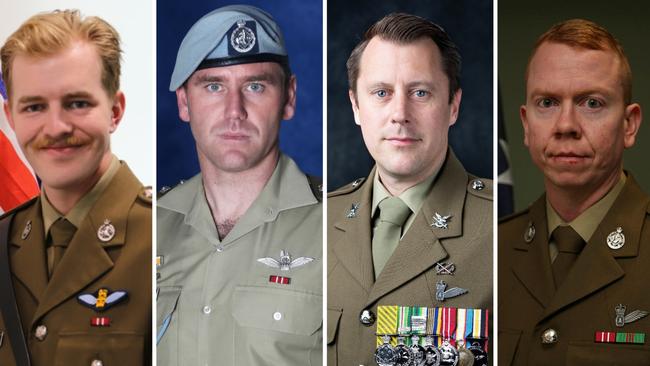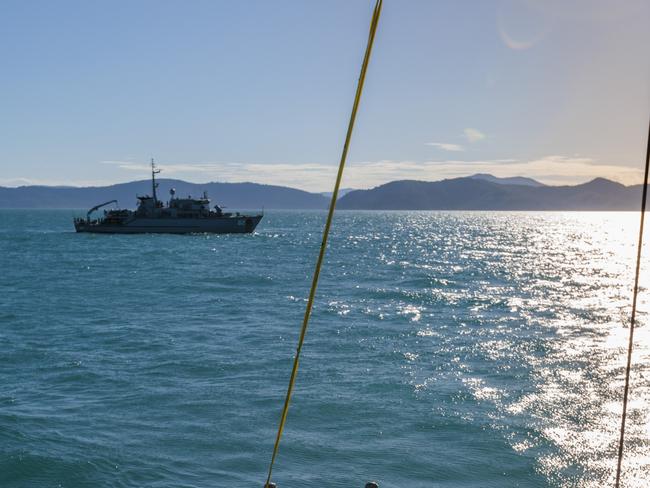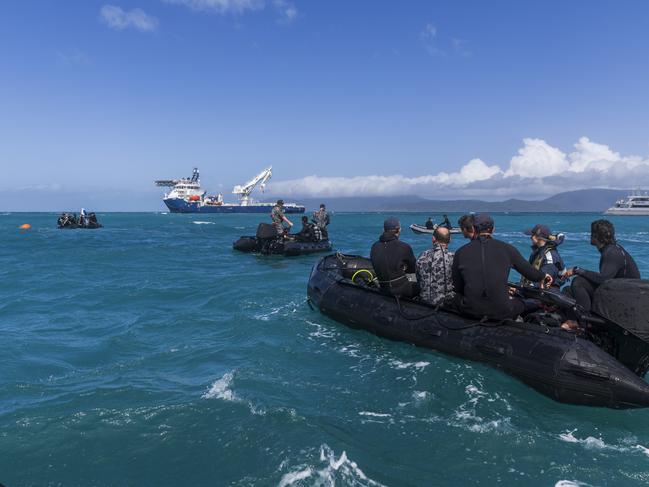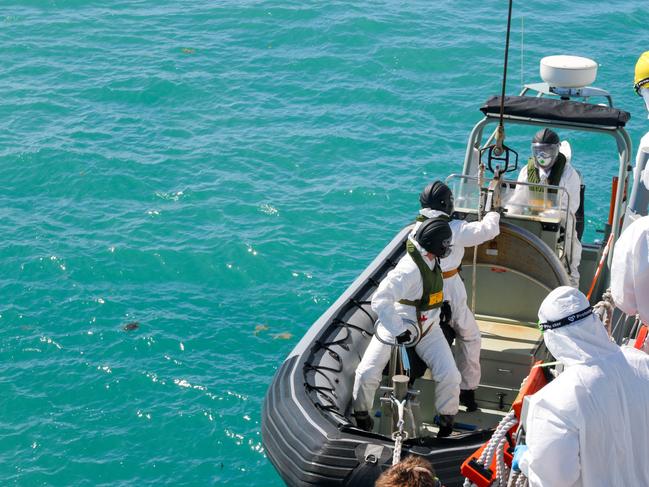Pilot’s last manoeuvre may have prevented second helicopter tragedy
A gripping new report reveals how an Army pilot’s last act of bravery averted an even greater tragedy in the fatal 2023 Taipan crash.

A military pilot’s last-second evasive manoeuvre likely saved four lives during a catastrophic Army helicopter crash in the Whitsundays, a new investigation has revealed.
Captain Danniel Lyon, who died alongside co-pilot Lieutenant Maxwell Nugent, Warrant Officer Class 2 Phillip Laycock and Corporal Alexander Naggs, managed to avoid a mid-air collision despite losing control of his MRH-90 Taipan, according to a 228-page report by the Defence Flight Safety Bureau (DFSB).
The crash occurred on July 28, 2023, during Exercise Talisman Sabre, when the Taipan, call sign Bushman 83, plunged into the ocean off Hamilton Island while flying in formation with three other helicopters.

The DFSB concluded the primary cause was spatial disorientation, with Captain Lyon and Lieutenant Nugent becoming disoriented for 21 seconds before impact. However, in the final moments, Captain Lyon rolled the aircraft to the right, diverting it from a potential collision course with Bushman 82.
“During the two and a half seconds after the pushover, (flight data recorder) analysis indicates that the relative distance between the two aircraft decreased from approximately 100 metres to 50 metres,” the report said.
“In response to this increasing closure, it is likely (Captain Lyon) acted to avoid a potential mid-air collision with BSMN 82 by executing an avoidance turn to the right.”

The report found Captain Lyon’s action, taken while the aircraft was “unrecoverable”, likely prevented further loss of life.
Cockpit audio captured a calm and focused exchange between Captain Lyon and Lieutenant Nugent just seconds before the crash.
“It’s getting dicey,” Captain Lyon said five seconds into a left-hand turn through rain showers.
Moments later, he told Lieutenant Nugent, “I’ll just get around the corner for you mate … while we’re dealing with the rain shower.”
As they climbed, Captain Lyon asked: “Have you still got em?” referring to the aircraft ahead.
Lieutenant Nugent replied, “Yeah, still get em mate.”

Investigators believe this exchange marked the moment Captain Lyon lost visual contact with the Bushman 82 helicopter. He then began climbing through poor visibility and attempted quick manoeuvres to regain sight of the aircraft, rolling sharply right and then left.
Neither Captain Lyon nor co-pilot Lieutenant Nugent appeared to notice a critical change in the aircraft’s pitch, from nose-up to nose-down, as their helicopter climbed above the rest of the formation
Unaware of the aircraft’s downward attitude, Captain Lyon pitched down further, inadvertently pushing the aircraft into a fatal nose-down descent.
In the final seconds before impact, Captain Lyon recognised that his plummeting helicopter, Bushman 83, was on a collision course with Bushman 82.
Despite knowing his own chopper was unrecoverable, he took immediate evasive action, rolling sharply to the right in a final act that likely saved the lives of the four crew aboard Bushman 82.
Bushman 83 hit the water at 10:36:25pm, travelling at 259km/h. The four men were killed instantly.

The DFSB noted that fatigue likely contributed to the spatial disorientation. Both Captain Lyon and Lieutenant Nugent had been sleeping in tents at Proserpine Airport in the days prior and waited inside the aircraft for two hours before takeoff.
The investigation also assessed whether the TopOwl 5.10 helmet, criticised in test reports for its inverted pitch and roll displays when pilots turn their heads, contributed to the crash.
The helmet was described by Army test pilots as a “substantial risk of multiple deaths”, but the DFSB found it was “very unlikely” to have caused the disorientation in this instance.
“While both AATES and Standards Section test and evaluation reports agreed that there were deficiencies relating to attitude presentation, the two agencies disagreed on the severity of the hazard,” the report said.

The DFSB made 46 recommendations, including improvements to fatigue management, minimum night flying altitudes over water, and better training for spatial disorientation. The Defence Aviation Authority has accepted all recommendations.
The report is one of the most complex aviation investigations conducted by Defence.
Separate probes by the Inspector-General of the ADF, Comcare, and the Queensland coroner remain ongoing.


